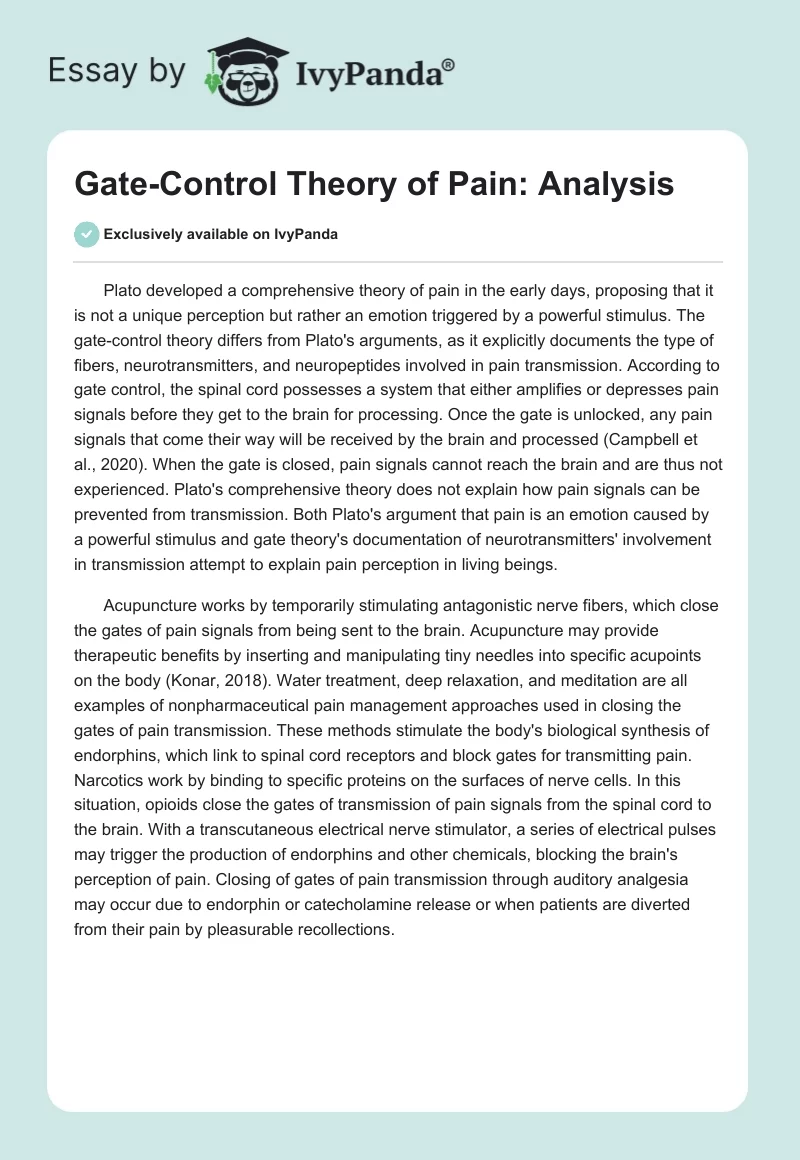Plato developed a comprehensive theory of pain in the early days, proposing that it is not a unique perception but rather an emotion triggered by a powerful stimulus. The gate-control theory differs from Plato’s arguments, as it explicitly documents the type of fibers, neurotransmitters, and neuropeptides involved in pain transmission. According to gate control, the spinal cord possesses a system that either amplifies or depresses pain signals before they get to the brain for processing. Once the gate is unlocked, any pain signals that come their way will be received by the brain and processed (Campbell et al., 2020). When the gate is closed, pain signals cannot reach the brain and are thus not experienced. Plato’s comprehensive theory does not explain how pain signals can be prevented from transmission. Both Plato’s argument that pain is an emotion caused by a powerful stimulus and gate theory’s documentation of neurotransmitters’ involvement in transmission attempt to explain pain perception in living beings.
Acupuncture works by temporarily stimulating antagonistic nerve fibers, which close the gates of pain signals from being sent to the brain. Acupuncture may provide therapeutic benefits by inserting and manipulating tiny needles into specific acupoints on the body (Konar, 2018). Water treatment, deep relaxation, and meditation are all examples of nonpharmaceutical pain management approaches used in closing the gates of pain transmission. These methods stimulate the body’s biological synthesis of endorphins, which link to spinal cord receptors and block gates for transmitting pain. Narcotics work by binding to specific proteins on the surfaces of nerve cells. In this situation, opioids close the gates of transmission of pain signals from the spinal cord to the brain. With a transcutaneous electrical nerve stimulator, a series of electrical pulses may trigger the production of endorphins and other chemicals, blocking the brain’s perception of pain. Closing of gates of pain transmission through auditory analgesia may occur due to endorphin or catecholamine release or when patients are diverted from their pain by pleasurable recollections.
References
Campbell, T. S., Johnson, J. A., & Zernicke, K. A. (2020). Gate control theory of pain. In Encyclopedia of behavioral medicine (pp. 914-916). Cham: Springer International Publishing. Web.
Konar, H. (2018). DC Dutta’s textbook of obstetrics. JP Medical Ltd.


